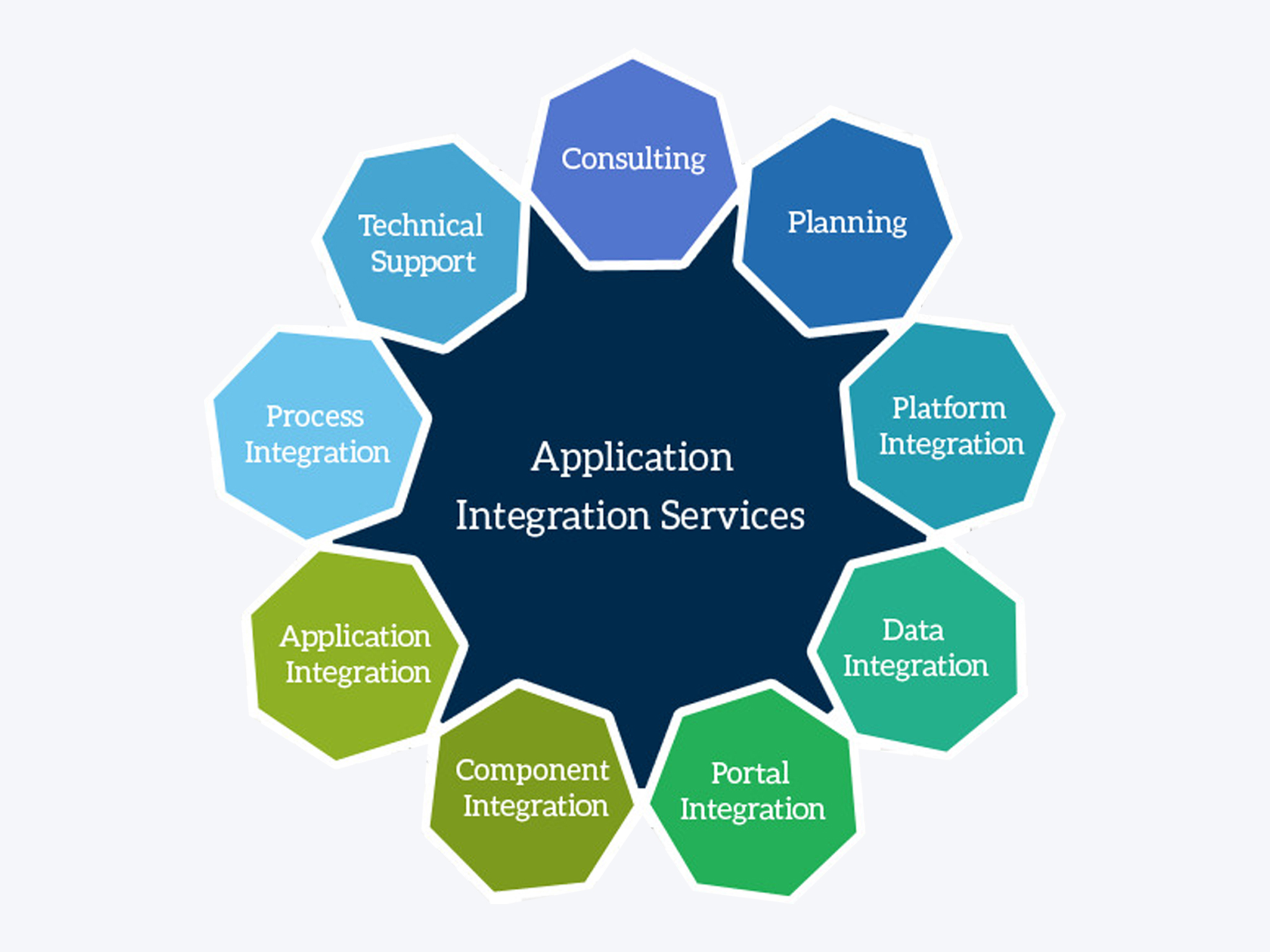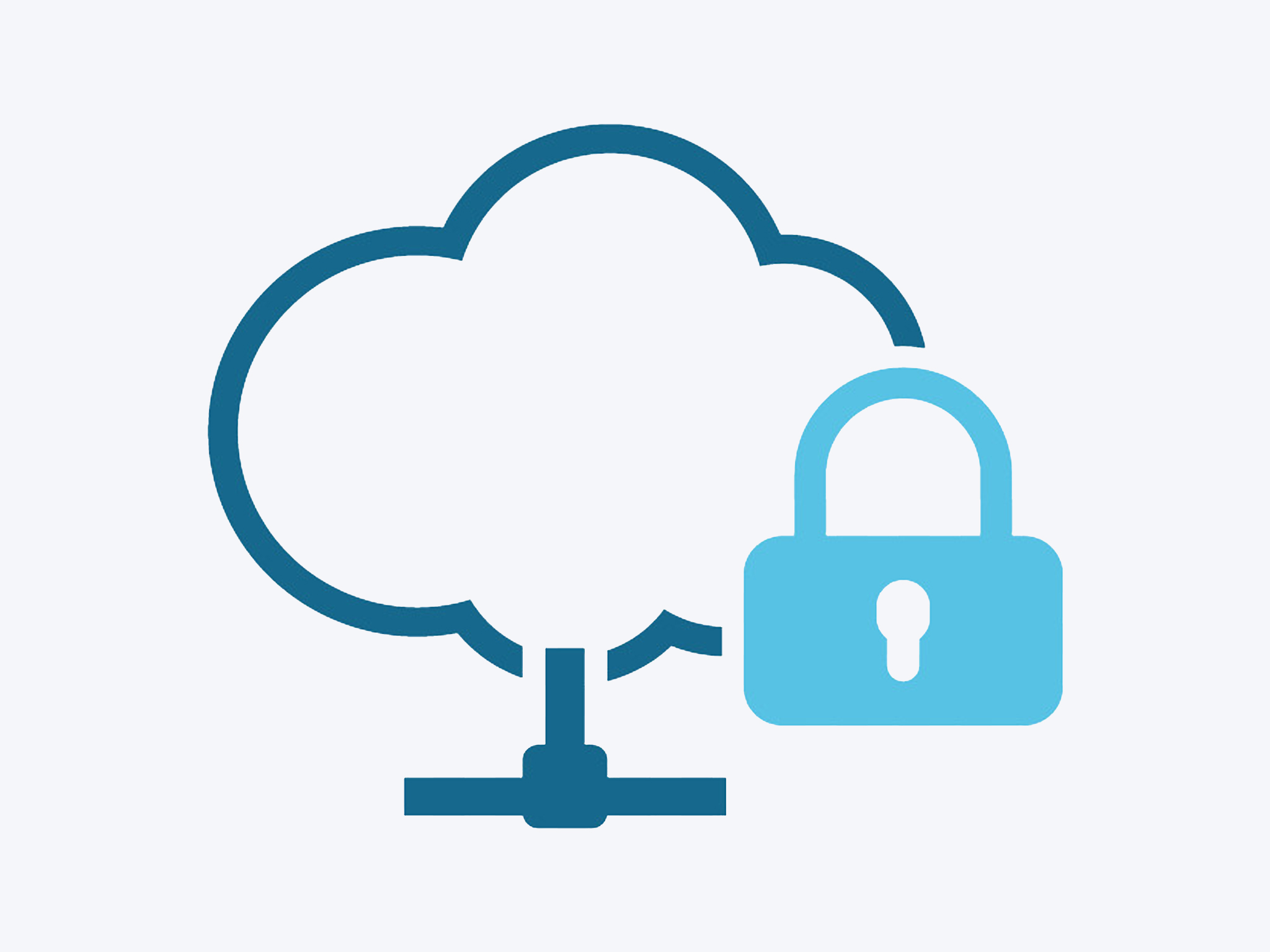Custom Software Development
What is application integration?
Application integration is the process of enabling individual applications—each designed for its own specific purpose—to work with one another. By merging and optimizing data and workflows between multiple software applications, organizations can achieve integrations that modernize their infrastructures and support agile business operations.
Application integration helps bridge the gap between existing on-premises systems and fast-evolving cloud-based enterprise applications. Through seamlessly interconnected processes and data exchanges, application integration allows enterprises to orchestrate a variety of functions across their entire infrastructures, enabling businesses to operate more effectively and efficiently.


Application integration concepts
When an organization considers moving forward with application integration, there are various components required to orchestrate processes between two or more applications successfully.
Application Programming Interface (API)
An API is a set of functions and procedures that specify how software components should interact. They allow developers to easily and quickly access the functionality of other software through well-defined data structures and have, as a result, become a popular way of integrating applications, data, and services, in recent years.
Events and actions
An event is an occurence in your connected applications—such as a payment being received. An event then triggers an action or series of actions, which can include standard functionality—like creating, retrieving, or updating datasets—and be application-specific—such as a new case being creating in Salesforce.

Data Mapping
Data mapping specifies the information exchange that’s to be used. For example, when you complete and submit contact forms in one application, this event can trigger actions that map those form fields to other corresponding datasets on other applications, categorizing the information entered into first name, last name, status, etc. This simplifies the process of exporting data for easier grouping and analysis.
Application vs. data integration
In discussions about the importance of integrated applications and services in an enterprise setting, the terms “application integration” and “data integration” are sometimes used interchangeably. However, the concept and use cases behind each of these processes are very different.
What is data integration?
Data integration is the practice of locating and retrieving information from various sources while combining that information into a unified structure and view. Also referred to as batch-based data processing, data integration involves collecting an extensive amount of data over time, storing it, and then eventually processing it in batches. Data integration isn’t necessarily conducted in real-time. It is commonly used after processes have been completed, so it can provide administrators the data portability they need to analyze application performance over time, eliminate redundancies, and ensure data consistency and quality.
How is application integration different?
Application integration is different from data integration in that it directly links multiple applications at a functional level. Application data may be linked in near real-time, allowing organizations to create dynamic and highly adaptable applications and services.
There are a number of proven application integration styles that can be used independently or in combination—from modern API-led integration where business IT assets can be exposed and discovered in a rapid and secure way, to more traditional Service Oriented Architectures like the Enterprise Service Bus, where you integrate different applications by putting a communication layer or ‘bus’ between them. This allows enterprises to orchestrate integration flows that trigger after events occur in one application to the next. Because of these real-time interactions, enterprises are able to stay agile, responding to new data feeds or performance issues as they occur, rather than after the fact.
Benefits of application integration
There are many complexities that integration can resolve, but what are the benefits? Integration provides value both on an organizational level as well as an operational level— if you choose the right integration tool.
Organizational benefits
Integrating your applications across various clouds is an important step toward synchronizing your data. However, you need an integration tool that allows deployment of integration runtimes within multiple clouds. This allows you to deploy close to your applications, resulting in lower latency times as processes run directly within the cloud and lower costs from not needing to move data in and out of platforms.


Smart Installations
Experts in design and installation of structured cabling

Business Transforming Solutions
Helping our clients achieve outstanding business outcomes

Our Smart Solutions
Dedicated team of developers and engineers
The right application tool can also yield important timesaving, cost-cutting, and performance-enhancing operational benefits
Access any data anywhere:
With organizations diversifying their application landscape (e.g., adopting SaaS applications, building new solutions in the cloud) data is increasingly dispersed across multiple environments. Integration tools that deploy across these environments enable access from any system to any sort of data in any format.
Resolve ‘endpoint individuality’:
Each system or application has its own idiosyncrasies that must be accounted for in any integration—error handling, authentication protocols, load management, performance optimizationm and more. Integration tools that handle these factors ‘out of the box’ yield tremendous gains in productivity over coding and a higher level of enterprise-class resiliency.
Let integrators focus on integration:
Purpose-built tooling can help integrators focus less on the surrounding infrastructure and more on building business logic. By addressing error recovery, fault tolerance, log capture, performance analysis, message tracing, and transactional update and recovery, an integration tool enables users to create integration flows more without requiring a deep knowledge of the various platforms and domains.


Application integration use cases
As more and more organizations concentrate on deploying agile integration strategies, modernizing legacy systems is a primary focus. Industry-specific examples include the following:
Banking:
By integrating customer accounts, loan applications services, and other back-end systems with their mobile app, a bank can provide services via a new digital channel and appeal to new customers.
Manufacturing:
Factories use hundreds or even thousands of devices to monitor all aspects of the production line. By connecting the devices to other systems (e.g., parts inventories, scheduling applications, systems that control the manufacturing environment), manufacturers can uncover insights that help them identify production problems and better balance quality, cost, and throughput.
Healthcare:
By integrating a hospital patient’s record with an electronic health record (EHR) system, anyone who treats the patient has access to the patient’s history, treatments, and records from the primary care physician and specialists, insurance providers, and more. As the patient moves through different areas of the hospital, the relevant caregivers can easily access the information they need to treat the patient most effectively.
Organizations in any industry can leverage mission-critical systems through integration:
ERP systems:
Enterprise resource planning (ERP) systems serve as a hub for all business activities in the organization. By integrating ERP with supporting applications and services, organizations can streamline and automate mission-critical business processes, such as payment processing, supply chain functions, sales lead tracking, and more.
CRM platforms:
When combined with other tools and services, customer relationship management (CRM) platforms can maximize productivity and efficiency by automating a number of sales, marketing, customer support, and product development functions.















